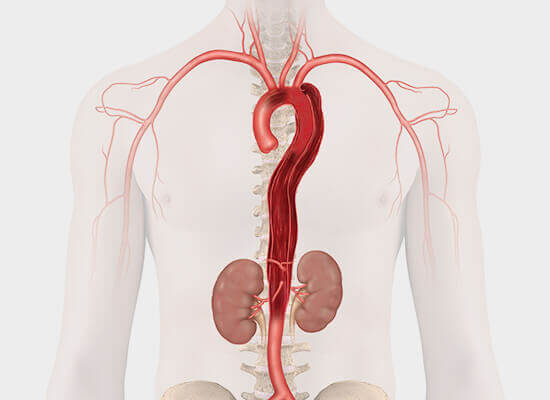Causes and risks of a thoracic aortic dissection

An aortic dissection happens suddenly. The tear is thought to
be caused by the pressure of blood flow on a diseased, or
weakened, section of the aorta combined with the repeated
motion and force of the heart beating 37-40 million times per
year.
Risk factors for developing a thoracic aortic dissection include
the following:
- High blood pressure
- Family history of thoracic aortic dissection
- Smoking
- Heart disease
- Trauma
- Connective tissue disorders such as Marfan syndrome or
Ehlers-Danlos syndrome